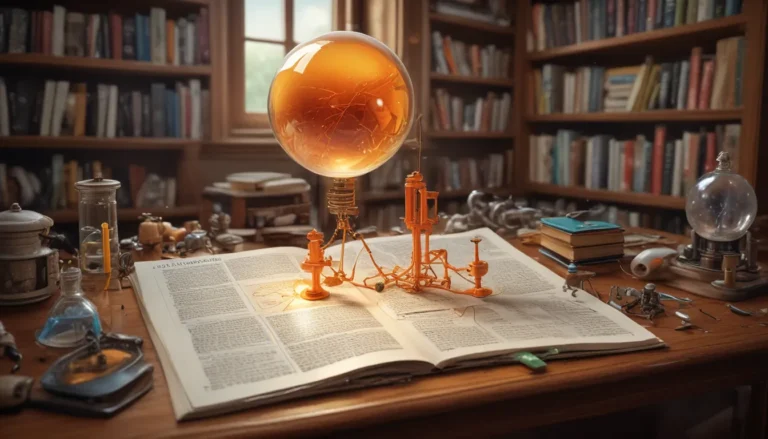A Note About Images: The images used in our articles are for illustration purposes only and may not exactly match the content. They are meant to engage readers, but the text should be relied upon for accurate information.
Do you ever stop to think about the incredible force that is pressure? It’s not just a concept found in physics textbooks—it’s all around us, influencing everything from the air we breathe to the food we cook. In this article, we’ll dive into the intriguing world of pressure and unearth 15 captivating facts that showcase its importance and fascinating properties. Whether you’re a science enthusiast or just curious about the physical world, these facts are sure to captivate and inspire you. So, let’s embark on a journey to uncover the hidden secrets behind pressure, a force that shapes our world in remarkable ways.
Discovering the Basics of Pressure
- Pressure is the force applied to an object, influencing everything from boiling points to the creation of diamonds.
- It is a critical element in weather patterns, sound transmission, and even the human circulatory system.
- Understanding pressure is vital in scientific and engineering fields, impacting our daily lives in unexpected ways.
Understanding the Fundamentals of Pressure
When an object is under pressure, it means that an external force is being exerted on it. This force can originate from gravity, fluid flow, or external compression, affecting the object’s behavior and properties.
Pressure is commonly quantified in units known as Pascals (Pa), where one Pascal is equivalent to one Newton per square meter. Other units like atmospheres, torrs, and pounds per square inch (psi) are also used to measure pressure in different contexts.
Exploring the Varied Forms of Pressure
- Pressure can exist as absolute or gauge pressure, where absolute pressure is measured relative to a perfect vacuum, while gauge pressure is measured relative to atmospheric pressure.
- Changes in pressure influence the boiling point of liquids, causing variations in boiling temperatures at different altitudes due to atmospheric pressure fluctuations.
- Diamonds owe their existence to the immense pressure deep within the Earth’s mantle, where carbon atoms bond under high pressure and temperature conditions.
Unveiling the Applications of Pressure
- Hydraulic systems rely on pressure in liquids to transmit force, allowing the movement of heavy objects with minimal effort.
- Weather patterns are influenced by changes in atmospheric pressure, with high-pressure areas signaling fair weather and low-pressure areas indicating storms.
- Pressure plays a critical role in scuba diving, enabling divers to control their buoyancy by adjusting air pressure in their buoyancy control device (BCD).
Delving Deeper into Pressure Phenomena
- Thermodynamic processes heavily rely on pressure as a key variable, influencing the behavior and efficiency of systems.
- Sound transmission through pressure waves is fundamental to the propagation of sound in a medium, highlighting pressure’s role in acoustic phenomena.
- Pressure changes with altitude, leading to decreased air density at higher altitudes and impacting climbers, aviators, and objects at extreme heights.
Embracing the Significance of Pressure in our World
- Extreme pressure can induce changes in material properties, transforming gases into solids under specific conditions.
- Blood pressure, a vital component of human circulatory health, reflects the force exerted by blood against blood vessel walls, emphasizing the importance of maintaining optimal blood pressure levels.
A Final Thought on the Intriguing Nature of Pressure
From the depths of the ocean to the heights of our atmosphere, pressure is a ubiquitous and enigmatic force that shapes our world in profound ways. Its ability to influence the behavior of substances, materials, and systems underscores its significance in various fields of science and technology.
As we unravel the mysteries of pressure, we gain a deeper appreciation for the intricate forces that govern our universe. So, the next time you encounter a pressurized environment or feel the weight of the world bearing down on you, remember the captivating facts about pressure that make it one of the most intriguing aspects of our physical reality.
FAQs: Exploring Common Questions About Pressure
-
What is pressure?
Pressure is the force applied to a surface divided by the area over which the force is exerted. -
How is pressure measured?
Pressure is commonly quantified using units such as pascals (Pa), atmospheres (atm), or pounds per square inch (psi). -
What is atmospheric pressure?
Atmospheric pressure is the force exerted by the Earth’s atmosphere on a surface due to the weight of the air above it. -
How does pressure affect boiling points?
Changes in pressure impact the boiling point of substances, with increasing pressure raising the boiling point and decreasing pressure lowering it. -
What is the impact of pressure on scuba diving?
Pressure increases with depth underwater, necessitating decompression stops to allow the body to adapt to changing pressure levels.
Embark on a Journey of Discovery with Pressure
The captivating nature of pressure extends far beyond its fundamental definitions. As you explore the realms of cooking with pressure cookers, uncover the secrets of vapor pressure, or delve into the role of osmotic pressure in biological and industrial processes, you’ll realize the immense influence pressure has on our lives.
Our commitment to providing engaging and reliable content ensures that every fact we share is meticulously reviewed for accuracy and authenticity. So, trust in our dedication to quality as you continue to learn and discover the wonders of pressure in this vast and intricate world we inhabit.






